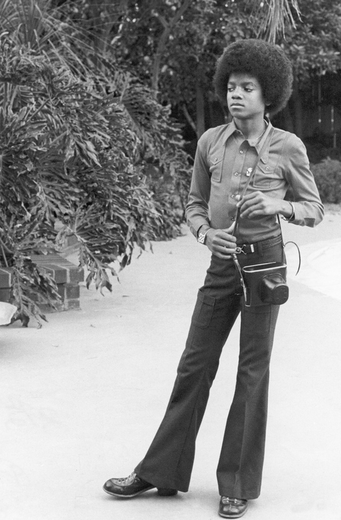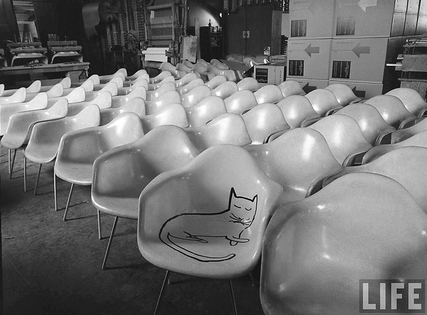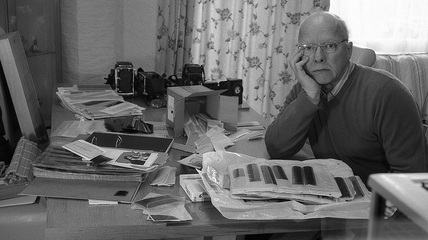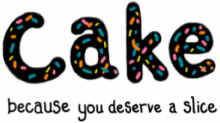 Michael Jackson became such a great dancer
Michael Jackson became such a great dancerbecause of his strong desire to avoid being interfered
with; dancing allowed him to escape others stylishly.
This is almost (but not quite) a Real Life Fact.
Confession time: I can be a little difficult to work with. I'm happiest when I'm embracing my inner wild child and I'm allowed to run all over the place, tinkering with things, sort of like a butterfly sampling nectar from ALL the flowers in a garden. Everything is just so delicious--why shouldn't I enjoy it?
Most people lead as they would like to follow. One of the frustrating things about managing creative people is that they just seem so dang difficult. How are you supposed to organize and direct people that you pay to actively flaunt norms and rules?
It begins with understanding the plight of the creative person in today's world. Look at the most powerful (read: richest) people in the world. How many of them are artists? How many of them are "traditional" practicing artists, such as painters, potters, photographers, printmakers or any other title which begins with P, and how many earn most of their influence/income primarily through art making? I'll wager few, if any. While it's true that thought leaders, actors, and artists can influence society there are relatively few of these sorts of people compared to millions of small business owners who hold their employees' futures and families in their hands.
As a person who holds an MFA in the most lucrative of all professions (creative writing, specifically short stories and poetry--watch out, Trump) I can tell you I'm pretty much an expert in two things: semi-obscure Polish artists and debt.
To prevent themselves from compulsory suicide, the folks over at BusinessWeek and US News have not calculated the ROI on MFAs. Suffice to say, for almost all MFAs, it's pretty bleak. Studying advanced composition and honing communication skills for years often leads you to a glamorous career in tending bar, waiting tables, or working at a dead end job and frequently begging your soul to stay when it wants to break up with you and go live inside some investment banker ("They need souls, clearly, so I'd be doing the world a favor," your soul always seems to argue).
Most people lead as they would like to follow. One of the frustrating things about managing creative people is that they just seem so dang difficult. How are you supposed to organize and direct people that you pay to actively flaunt norms and rules?
It begins with understanding the plight of the creative person in today's world. Look at the most powerful (read: richest) people in the world. How many of them are artists? How many of them are "traditional" practicing artists, such as painters, potters, photographers, printmakers or any other title which begins with P, and how many earn most of their influence/income primarily through art making? I'll wager few, if any. While it's true that thought leaders, actors, and artists can influence society there are relatively few of these sorts of people compared to millions of small business owners who hold their employees' futures and families in their hands.
As a person who holds an MFA in the most lucrative of all professions (creative writing, specifically short stories and poetry--watch out, Trump) I can tell you I'm pretty much an expert in two things: semi-obscure Polish artists and debt.
To prevent themselves from compulsory suicide, the folks over at BusinessWeek and US News have not calculated the ROI on MFAs. Suffice to say, for almost all MFAs, it's pretty bleak. Studying advanced composition and honing communication skills for years often leads you to a glamorous career in tending bar, waiting tables, or working at a dead end job and frequently begging your soul to stay when it wants to break up with you and go live inside some investment banker ("They need souls, clearly, so I'd be doing the world a favor," your soul always seems to argue).
 If you're wondering who is a creative in your organization
If you're wondering who is a creative in your organizationjust make them sit in a meeting for a few hours.
Then give them a magic marker. The creatives will
be the ones who jump up and deface company property.
Just because someone made some uninformed decisions when they were too young to understand what 30 years of paying off loans instead of investing in retirement meant doesn't mean that you should treat them like crap, but it does give you a unique opportunity to take advantage of them. In a good way.
The wonderful thing about creatives is that you can usually hire them for much less than you'd hire someone with a more "useful" degree. With some coaching, you can use the creative's natural tendencies toward problem-solving and understanding the bigger picture and transform your company. At the same point, the average creative will wither in a position with a ton of "arbitrary" rules, such as accounting or operations management, so if you must assign a creative to one of these departments it's best to keep an eye on them and make sure that you point out the usefulness and applicability of learning these skills. If you just leave the creative to his or her devices, their impulse to tinker and come up with new ideas will do a few things, namely it will seriously frustrate them and you will grow to hate them because they seem to be focused on everything but doing their job and shutting off their Idea Machines. Hiring and training creatives can give you extraordinary employees who help you manage costs and who become fiercely loyal to your company's mission. Allowing creatives room to breathe, both in terms of financial incentives and allowing them play time, creates an environment most creatives yearn for and never find. It's worth your investment.
One of the major errors many companies (particularly mid-sizers) make is to encourage homogeneity rather than diversity. If you're wondering what I mean, just look at some of the graphics or marketing campaigns for accounting firms, financial services, or industrial engineering. If you have an eye for design, you should quickly notice that the firms are indistinguishable from each other. If you inject your organization with diversity and creatives you'll be more likely to have a solid, differentiated brand. If you have a homogenous firm, you won't even hire advertising or creative firms who will propel your brand. You'll only hire people who will give you more of the same. It's not impossible, but it will be much harder for your firm to be recognized ubiquitously. You'll be forced to build brand recognition by signing people to participate in your product or service and this cost of acquisition is much, much, much higher than building a strong brand independent of your product.
The wonderful thing about creatives is that you can usually hire them for much less than you'd hire someone with a more "useful" degree. With some coaching, you can use the creative's natural tendencies toward problem-solving and understanding the bigger picture and transform your company. At the same point, the average creative will wither in a position with a ton of "arbitrary" rules, such as accounting or operations management, so if you must assign a creative to one of these departments it's best to keep an eye on them and make sure that you point out the usefulness and applicability of learning these skills. If you just leave the creative to his or her devices, their impulse to tinker and come up with new ideas will do a few things, namely it will seriously frustrate them and you will grow to hate them because they seem to be focused on everything but doing their job and shutting off their Idea Machines. Hiring and training creatives can give you extraordinary employees who help you manage costs and who become fiercely loyal to your company's mission. Allowing creatives room to breathe, both in terms of financial incentives and allowing them play time, creates an environment most creatives yearn for and never find. It's worth your investment.
One of the major errors many companies (particularly mid-sizers) make is to encourage homogeneity rather than diversity. If you're wondering what I mean, just look at some of the graphics or marketing campaigns for accounting firms, financial services, or industrial engineering. If you have an eye for design, you should quickly notice that the firms are indistinguishable from each other. If you inject your organization with diversity and creatives you'll be more likely to have a solid, differentiated brand. If you have a homogenous firm, you won't even hire advertising or creative firms who will propel your brand. You'll only hire people who will give you more of the same. It's not impossible, but it will be much harder for your firm to be recognized ubiquitously. You'll be forced to build brand recognition by signing people to participate in your product or service and this cost of acquisition is much, much, much higher than building a strong brand independent of your product.
 After a recent influx of new hires in 1976, senior accountant Bill
After a recent influx of new hires in 1976, senior accountant BillMyers was asked to share a desk with the Production
crew. Later that afternoon he barricaded himself in the
bathroom, clutching his actuarial tables and t-accounts
because his life literally depended on it. At Generic Firm this
story is still told to scare creative accountants straight, and
legend says that if you listen carefully, you can still hear his
sobs quietly making their way down the ductwork.
One of my goals is to eventually hire people whose leadership methods annoy me so much that I want to fight them and their loved ones in a cage match. Unfortunately for me, I am so individualistic and hard-headed that I will lead Cake down the Wayside School path and instead of GAAP our accounting will have pictures of ninjas, cats, unicorns and lots of high fives and thumbs up. Our statement of cashflows will just read, "OMG we totes haz moniez ^.^ we're purrty sure." 98% of our shareholders will be nine year old girls who have time-traveled from 1992, and having been disappointed in the lack of futuristic Lisa Frank Trapper Keepers, have decided to give their piggy banks over to Cake.
Keeping creatives on the payroll is also great insurance in case there's an unexpected event. Creatives will gravitate toward volatile environments where there's an increased chance of stimulation. Predictability will eventually bore the creative. If you're able to put a creative in a role where they can manage or respond to change, create dynamic leadership initiatives, or even interact with a lot of different stimuli you're setting yourself (and them!) up for success.
Keeping creatives on the payroll is also great insurance in case there's an unexpected event. Creatives will gravitate toward volatile environments where there's an increased chance of stimulation. Predictability will eventually bore the creative. If you're able to put a creative in a role where they can manage or respond to change, create dynamic leadership initiatives, or even interact with a lot of different stimuli you're setting yourself (and them!) up for success.
 Outdoor Co. presented their creative interns with a
Outdoor Co. presented their creative interns with a $10,000 budget and told them to generate a new sport. Sadly,
carpet canoeing never really took off despite a promising
partnership with Tim Leary.
I guess you'd find it helpful to have a sort of checklist for what creatives like and how you can engage them. Well, as a creative I'm loathe to Checklist, but because I love y'all I'll do you a solid:
1. Allow your creatives a view into the Greater Goal and show them how their contributions matter.
2 .Make sure that the creative understands that their contributions not only matter to you and the company, but inspire them to do their best work by showing the creative how their contributions better their lives.
3. Put a lot of thought into where you assign the creative. We hate to be micro-managed, so if you can give us an assignment where we're allowed to experiment and flex our problem-solving muscles, we'll give you better results. And we'll be less likely to make you go bonkers.
4. Touch base with the creative team fairly infrequently but predictably. We love to be praised and given broad directives. View our creativity as a babbling brook and your creatives like a paper boat--a little shove in the right direction is all you need to see forward motion.
5. Allow your creatives to get off topic every once in a while. If you force their nose to the Task Grindstone, all you'll create is resentment and uninspired product. The most famous example of this is Google's 20% Time project initiative. Google has since cut a lot of the fat out of this incentive, but it nonetheless is a good model for your creative employees.
1. Allow your creatives a view into the Greater Goal and show them how their contributions matter.
2 .Make sure that the creative understands that their contributions not only matter to you and the company, but inspire them to do their best work by showing the creative how their contributions better their lives.
3. Put a lot of thought into where you assign the creative. We hate to be micro-managed, so if you can give us an assignment where we're allowed to experiment and flex our problem-solving muscles, we'll give you better results. And we'll be less likely to make you go bonkers.
4. Touch base with the creative team fairly infrequently but predictably. We love to be praised and given broad directives. View our creativity as a babbling brook and your creatives like a paper boat--a little shove in the right direction is all you need to see forward motion.
5. Allow your creatives to get off topic every once in a while. If you force their nose to the Task Grindstone, all you'll create is resentment and uninspired product. The most famous example of this is Google's 20% Time project initiative. Google has since cut a lot of the fat out of this incentive, but it nonetheless is a good model for your creative employees.
 Generic Firm saw a 68% increase in Mary's productivity
Generic Firm saw a 68% increase in Mary's productivityonce they allowed her an opportunity to strut her stuff
and spend a little time in the spotlight.
6. The creative will pretend to hate money, capitalists, and financials. This a ruse, mostly, as we must not dishonor the conventions of our clan. Creatives love stable income, but at the same time use praise and other non-cash incentives to fill the creative's Vision with hearts instead of just dollar signs. We'll love you for it.
7. To decode the mystery of the creative, make sure you frequently interact with them and gain their trust. Interact with them as people, not just employees. Allow them to be a little unprofessional and inappropriate with you and they'll respect you more. I know that it's counterintuitive that by allowing them to disrespect you will increase their respect for you, but such is Creative Mystique.
Truly creative people are some of the most uncommon employees you'll find. If you give them the right environment, they'll engage your company values in a way your card punchers won't because they'll emotionally and spiritually connect with their work. If you're wondering how to attract more creatives to your organization, just ask for a slice of Cake and we'll be happy to help.
7. To decode the mystery of the creative, make sure you frequently interact with them and gain their trust. Interact with them as people, not just employees. Allow them to be a little unprofessional and inappropriate with you and they'll respect you more. I know that it's counterintuitive that by allowing them to disrespect you will increase their respect for you, but such is Creative Mystique.
Truly creative people are some of the most uncommon employees you'll find. If you give them the right environment, they'll engage your company values in a way your card punchers won't because they'll emotionally and spiritually connect with their work. If you're wondering how to attract more creatives to your organization, just ask for a slice of Cake and we'll be happy to help.

 RSS Feed
RSS Feed
